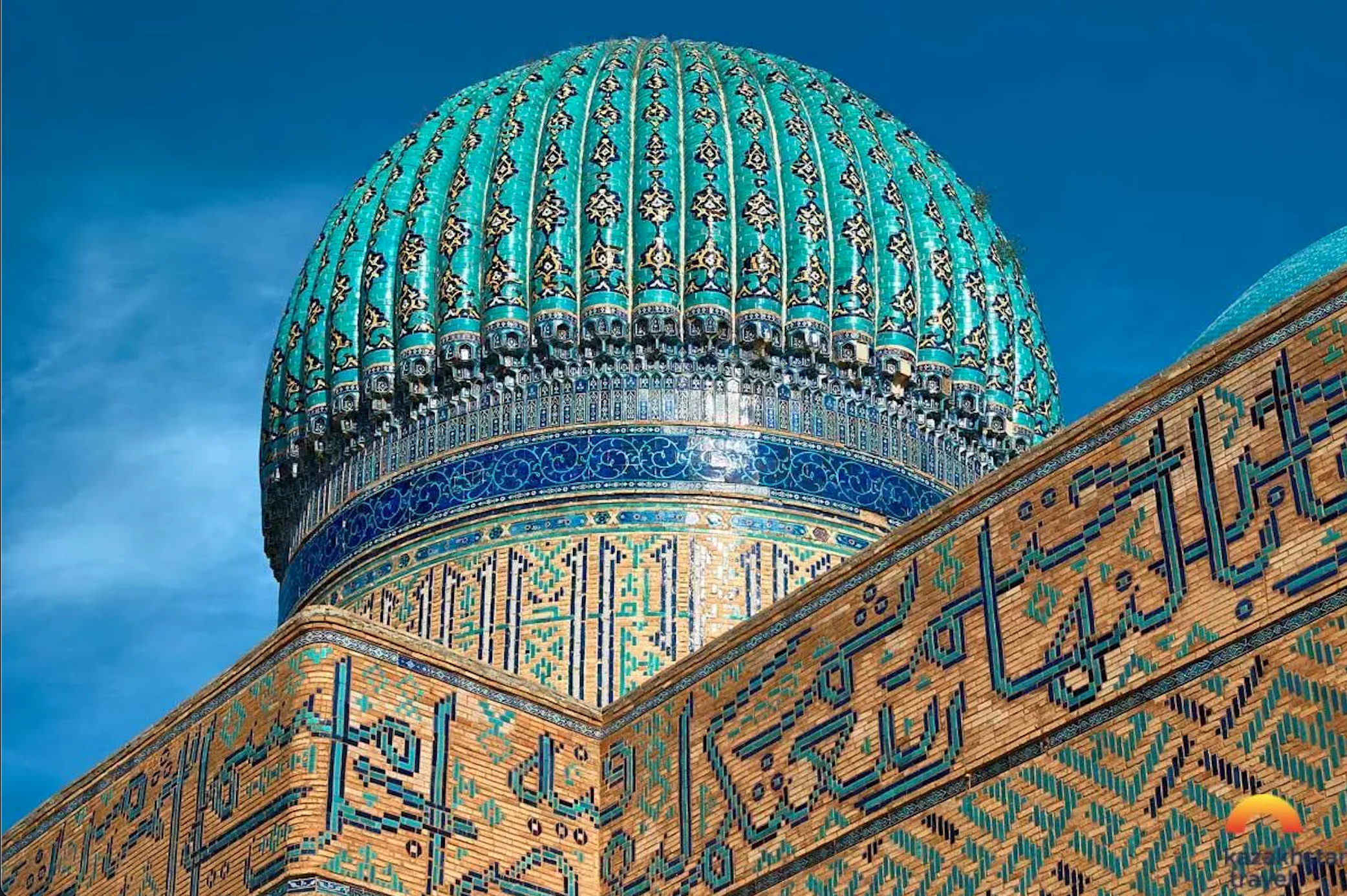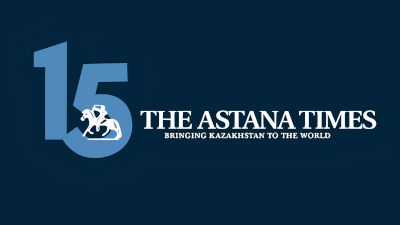Editor’s Note: The Astana Times continues its series of articles, Exploring Kazakhstan, City by City, in the marvelous city of Turkistan. We are setting out to unveil the rich diversity of cities to bring you closer to the heart and soul of Kazakhstan.
ASTANA – Turkistan stands as a cultural and historical jewel of Kazakhstan, located on the Great Silk Road. The city has a rich history and has spiritual significance for the entire Turkic people. Revered by pilgrims, it is often said that three visits to Turkistan equate to a small hajj to Mecca.

Khoja Ahmed Yasawi Mausoleum in Turkistan. Photo credit: kazakhstan.travel.
In recent years, the city has transformed into a thriving regional tourism hub, thanks to government support and private investment. A modern tourism infrastructure now flourishes in southern Kazakhstan, attracting visitors worldwide.
A glimpse into history
Turkistan is among Kazakhstan’s oldest cities, founded in 418 AD. By the 10th century, it was known as Shavgar (Shavagar) and was part of the Samanid state. However, by the 12th century, Shavgar vanished from historical records, giving way to Yasi, a settlement that would later become modern-day Turkistan.
Yasi gained prominence as the home of renowned philosopher and poet Khoja Ahmed Yasawi in the 12th century. His burial site became a place of great reverence, and in 1398, during Timur’s rule, a grand mausoleum and mosque were erected over his grave. Today, this UNESCO World Heritage Site attracts countless pilgrims, ensuring its preservation through ongoing restoration efforts initiated last year.
In the 16th century, Yasi rose to become the capital of the Kazakh Khanate, earning its new name, Turkistan. Archaeological discoveries reveal that a mint operated here, producing silver coins bearing the images of Kazakh khans.
In 1864, the city was integrated into the Turkistan Governor-Generalship, losing its status as a capital.
With Kazakhstan’s independence in 1991, Turkistan began a new chapter. Since 2018, it has experienced a remarkable renaissance, reclaiming its position as the country’s spiritual and historical center. Tourism has flourished alongside this revival, bolstered by the opening of an international airport in 2020, cementing Turkistan’s role as a gateway to Kazakhstan’s rich cultural heritage.
The rise of tourism and the regional growth

The Mausoleum of Arystan Bab. Photo credit: kazakhstan.travel.
The Turkistan Region stands out among the country’s regions with its advantageous climate, abundant human and natural resources, and significant industrial potential. These assets drive the growth of key sectors, including agriculture, renewable energy, mining, and tourism.
The region is rich in mineral deposits of barite, coal, iron, polymetallic ores, bentonite clays, vermiculite, talcum, limestone, granite, marble, gypsum, and quartz sands. The region ranks first in the country in reserves of uranium and third in the reserves of phosphorites and iron.
Polymetallic ores are particularly abundant on the southwestern slope of the Karatau ridge, noted for their high iron content and excellent enrichment properties. Additionally, the region boasts resources for construction materials, such as limestone, gypsum, quartz sands, refractory ceramic clays, ornamental stones, and travertine.
From January to October, the region achieved industrial production valued at $1.832 million, marking an 8.8% increase compared to the same period in 2023. The gross regional product for the first quarter reached 927.6 billion tenge (US$1.7 billion), with a growth rate of approximately 4%.

The Caravanserai Complex. Photo credit: qazaqgeography.kz
In 2024, the Organization of Turkic States (OTS) named Turkistan the tourist capital of the Turkic world, bolstering its global appeal. During the first half of the year, the region welcomed over 326,000 pilgrims and tourists, a 37.6% increase from the same period in 2023.
The eQonaq information system registered 17,419 foreign visitors in the first nine months of the year. Among them, the majority hailed from Uzbekistan (10,920), followed by Russia (1,425), China (989), Türkiye (751), the Kyrgyz Republic (438), India (368), France (300), Germany (217), the United States (192), and Italy (177).
A comprehensive roadmap for tourism development has been approved, aiming to significantly boost visitor numbers by 2025. Domestic tourism is projected to grow by 25%, international tourism by 2.5 times, and overall tourism activities by 30%.
Must-see landmarks
Turkistan’s most renowned attractions are centered around the Mausoleum of Khoja Ahmed Yasawi. During his lifetime, Yasawi held significant influence among Muslims. After his death in the mid-12th century, he was buried in a modest mausoleum, which attracted even more visitors, solidifying the site as a spiritual sanctuary.

Photo credit: qazaqgeography.kz
In addition to the majestic mausoleum, Timur also established a Sufi monastery for Yasawi’s followers. Successive rulers worked to preserve the mausoleum, which briefly served as the residence of Kazakh khans during the Kazakh Khanate era.
Among Turkistan’s other historical landmarks is the Mausoleum of Rabia Sultan Begim, granddaughter of Timur and daughter of Mirzo Ulugh Beg. Though the mausoleum fell into ruin and was demolished in 1896, a crypt discovered in the 1950s led to its reconstruction in 1980. The structure reflects the Timurid style, featuring an octagonal brick base with arched façades, a cylindrical drum, and a dome adorned with ceramic tiles.
Nearby lies a necropolis housing the tombs of prominent Kazakh khans, including Abylai Khan, Yessim Khan, and Abulkhair Khan. The grounds surrounding the Yasawi Mausoleum also contain remnants of ancient buildings, such as mosques, bathhouses, and one of the most significant structures, the Hilvet Semi-Underground Mosque. Built in the 12th century, this mosque served as the place where Khoja Ahmed Yasawi preached, wrote, and taught the Sufi faith.
Turkistan offers visitors a variety of museums that celebrate its rich history, including the Museum of Eastern Baths, the 18th-century Juma Mosque Museum, the Archaeology and Ethnography Museum, and the Museum of Turkistan History.
An essential stop for pilgrims is the Mausoleum of Arystan Bab, located 60 kilometers from Turkistan. As the spiritual mentor of Khoja Ahmed Yasawi, Arystan Bab’s mausoleum is traditionally the starting point for pilgrimages to Turkistan’s sacred sites.

The Mausoleum of Rabia Sultan Begim. Photo credit: wildticketasia.com
Among the city’s modern attractions is the Caravanserai Complex, a 20.5-hectare development near the Yasawi Mausoleum. This immersive site recreates Silk Road-era artisan streets and trading quarters, featuring an amphitheater for equestrian shows, the region’s only “Flying Theater,” hotels, restaurants, and entertainment venues. Construction began in December 2019 under the Turkistan Tourism City initiative.
The Turkistan Railway Station, built in 1903, stands as an architectural monument. The brick structure, originally divided into three sections for passengers, blends Eastern-style frescoes and intricate details like towers and door handles with the cityscape. Inside, a bronze chandelier and early 20th-century buffet evoke the elegance of a bygone era.
How to get there
Turkistan is located 1,623 kilometers from the Kazakh capital, and the quickest way to reach it is by plane, with ticket prices starting at 52,000 tenge (US$99). For budget travelers, the most affordable option is a bus ride, which takes about 26 hours and costs around 15,000 tenge (US$28) one way. Train tickets offer a middle-ground option, with round-trip fares priced at approximately 21,000 tenge (US$40).
Kazakhstan recently launched the Silk Road Railway Tour, featuring an inaugural Almaty–Turkistan–Tashkent–Almaty route. This four-day journey highlights key attractions, including the historic city of Turkistan, the vibrant streets of Tashkent, and the ancient trade hub of Otyrar. In Turkistan travelers have the opportunity to explore sites such as the Arystan Bab Mausoleum, the Azret Sultan State Historical and Cultural Reserve Museum, and Caravanserai.


